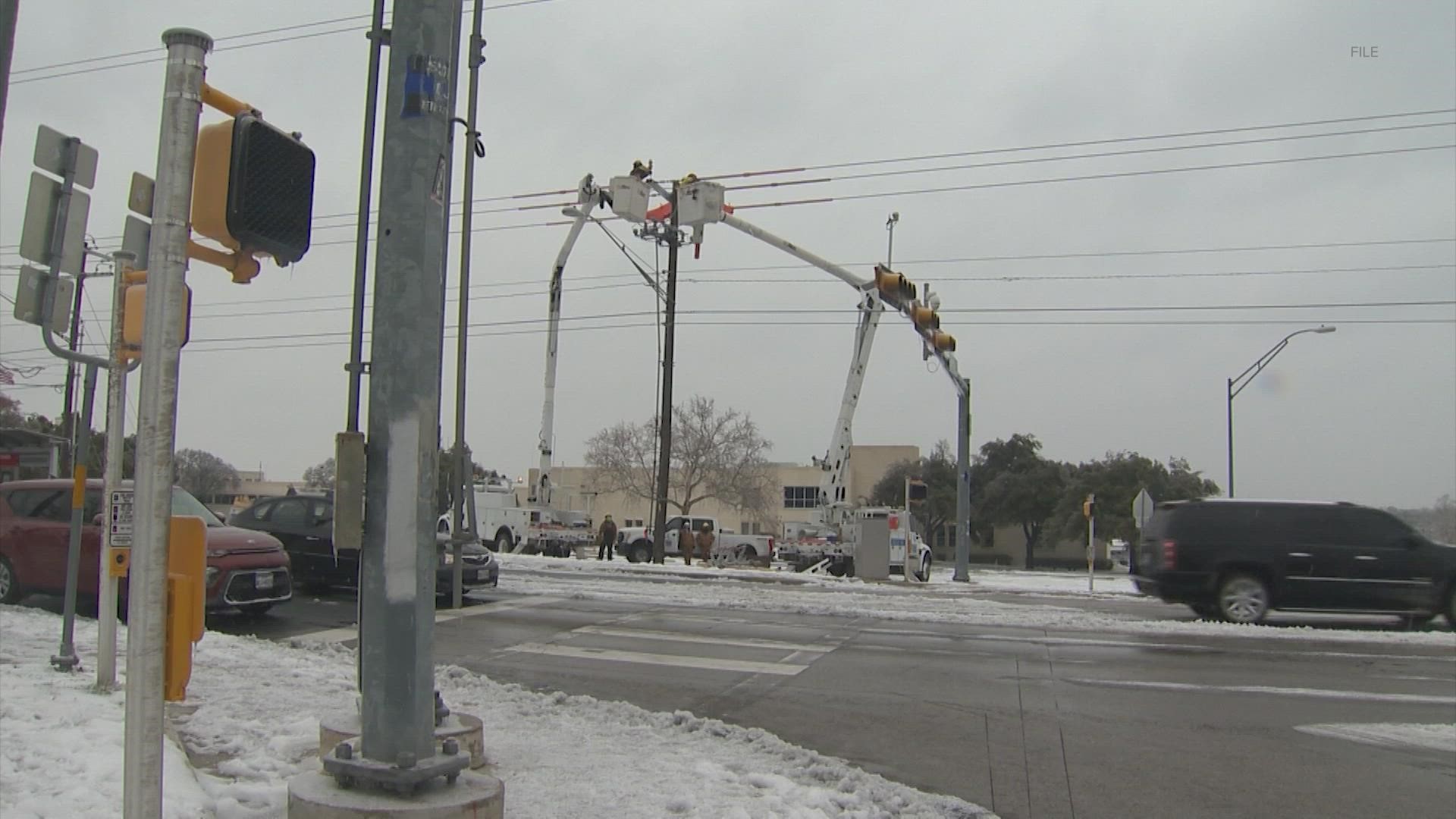AUSTIN, Texas — When the February winter storm, known as Winter Storm Uri, knocked out power plants and froze power generators, the Electric Reliability Council of Texas (ERCOT) called for load shedding. Load shedding is the State’s way of saying blackout.
Texas was at the edge of darkness – less than five minutes from all power shutting off.
“Thinking in terms of the lives that would have been lost because that would have been protected facilities, everything would have been black,” Texas State Rep. Tracy King said in the Texas House Committees on State Affairs and Energy Resources joint hearing on Feb. 25.
The Laredo representative was part of a joint hearing questioning ERCOT leaders about what happened during Uri.
“It was that dire,” King said.
A catastrophic Texas blackout could eventually leave first responders and hospitals without power. Everything would shut down.
“Some places would have had backup generation, but that would have run out very quickly,” King said.
Homes and businesses get electricity from the power grid. Most of Texas is on the ERCOT grid and is isolated from the rest of the country. The grid gets its electricity from power generators, like coal, natural gas and wind. The generators also need the grid’s electricity to operate. It’s a cycle and a big problem if everything goes dark.
“A power plant is not exactly like a car that you can just walk out to turn a key and it starts,” said Joshua D. Rhodes, Ph.D., postdoctoral researcher at Webber Energy Group/Energy Institute, University of Texas at Austin.
Texas relies on 28 primary and alternate black-start resources, according to this federal report. The units can make power without help from the state’s electric grid. The State pays for the units to be on standby.
“You'd first have to start these power plants. You would have to make sure that power moved to other power plants and not to people consuming energy. You’d have to get those [other] power plants started,” Rhodes said.
The State describes the process as islands, small segments to get balanced before moving on to another and another.
The Department of Energy shows one black-start unit may take six hours to get going. If the grid doesn’t stay balanced and uses too much power at once, the grid could shut down again. The process would start over.
ERCOT leaders told lawmakers homes could be without power for weeks to months.
“If the grid did go down catastrophically, there would likely be some damage to the system that we would only find once we tried to restart it. It might take time, you know, weeks, if not months, sometimes to get all of that infrastructure together. If you have to get a new transformer drop shipped from Asia to over here, that takes time,” Rhodes said.
The KVUE Defenders found Texas would not have had all of its black-start units in February.
The Federal Energy Regulatory Commission (FERC), the North American Electric Reliability Corporation (NERC) and NERC’s regional entities analyzed Winter Storm Uri’s impact on the Texas power grid.
“Over the course of the event, 82% of ERCOT’s 28 (primary and alternate) black-start resources … experienced an outage, derate or failure to start at some point,” the report shows.
That’s 23 of 28 units. Only five black-start units stayed functional the entire duration of Uri.
“If we had been another four minutes, generators would have started tripping off and we would have gone kind of down a spiral,” Bill Magness, former ERCOT CEO, said during the Feb. 25 hearing.
The KVUE Defenders asked ERCOT for the status of the damaged black-start units.
“ERCOT’s complete black-start inventory is 100% available, if needed,” the corporate communications team replied.
PEOPLE ARE ALSO READING:

